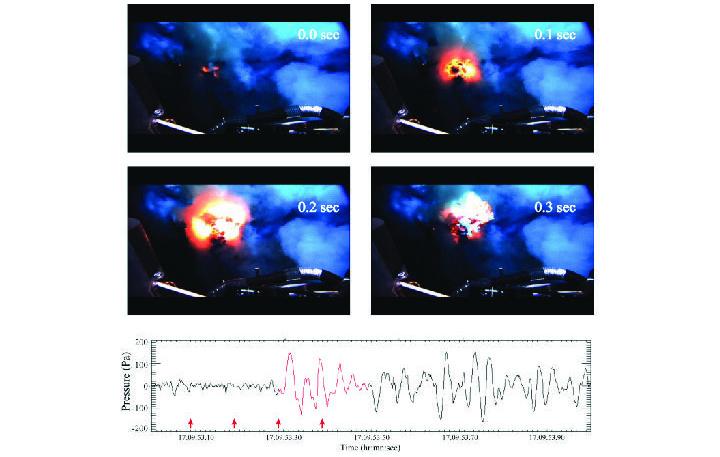Feature Publication Archive
Johnson, G.C., and A.R. Parsons (2015): Overview. In State of the Climate in 2014, Global Oceans. Bull. Am. Meteorol. Soc., 96(7), S59.
Every year NOAA leads a team of international scientists in issuing a report on the state of the climate in the year just passed, published as a supplement to Bulletin of the American Meteorological Society. Ten Federal, JISAO, and JIMAR scientists resident at PMEL co-authored four of twelve sections and a sidebar in the Global Oceans chapter and a section in the Arctic chapter for the State of the Climate in 2014 report, published in July 2015. In addition, Dr. Gregory... more »
Mathis et al., 2015. Special Issue on Emerging Themes in Ocean Acidification Science. Oceanography, 28(2), 10–228.
In June 2015,Oceanography released a special issue on Emerging Themes in Ocean Acidification Science. The papers in this issue were written in conjunction with the 2013 Ocean Acidification Principle Investigator’s Meeting, organized by the Ocean Carbon and Biogeochemistry Project’s Ocean Acidification subcommittee and sponsored by NSF, NOAA, and NASA. This meeting brought together the US-funded OA research community to assess the state of the science... more »
Bond, N.A., M.F. Cronin, H. Freeland, and N. Mantua (2015): Causes and impacts of the 2014 warm anomaly in the NE Pacific. Geophys. Res. Lett., 42(9), 3414–3420, doi:10.1002/2015GL063306.
Remarkably high sea surface temperature anomalies developed in the NE Pacific Ocean during the winter of 2013/14. This caught the attention of Nick Bond of the University of Washington’s Joint Institute for the Study of the Atmosphere and Ocean (JISAO)—who started calling the mass of warm water the “Blob”—and Meghan Cronin of NOAA Pacific Marine Environmental Laboratory (PMEL). Their objective was to determine the relative importance of the various upper ocean temperatures that could have been responsible for this short-term climate event.
As detailed in this recent article... more »
Quinn, P.K., D.B. Collins, V.H. Grassian, K.A. Prather, and T.S. Bates (2015): Chemistry and related properties of freshly emitted sea spray aerosol. Chem. Rev., doi: 10.1021/cr500713g.
Clouds, which cover about 60% of the Earth at any given time, have a large impact on the planet’s radiation balance by reflecting solar radiation back to space and trapping infrared radiation emitted by the surface. Clouds only form through the condensation of water vapor onto atmospheric particulates known as cloud condensation nuclei (CCN). Whether a particle is able to act as a CCN depends on its size and chemical composition. Optically thin clouds that persist in marine regions are particularly susceptible to changes in the concentration, size, and composition of atmospheric... more »

Gas-filled bubbles of lava during eruption phase, Hades vent, West Mata volcano.
Dziak, R.P., D.R. Bohnenstiehl, E.T. Baker, H. Matsumoto, J. Caplan-Auerbach, R.W. Embley, S.G. Merle, S.L. Walker, T.-K. Lau, and W.W. Chadwick, Jr. (2015): Long-term explosive degassing and debris flow activity at West Mata submarine volcano. Geophys. Res. Lett., 42(5), doi:10.1002/2014GL062603.
Even though ~75% of Earth's volcanic activity occurs below the sea surface, many questions remain on the longevity and acoustic characteristics of explosive seafloor eruptions. To date, only two active eruptions have ever been observed visually in the deep-ocean (>500 m) volcanoes, and then only over time periods of hours to days. The discovery of the actively erupting West Mata volcano in the NE Lau Basin near Samoa offered a rare opportunity to investigate a deep-ocean, explosive eruption. Video images of West Mata collected by remotely operated vehicle (ROV) provided unprecedented... more »


